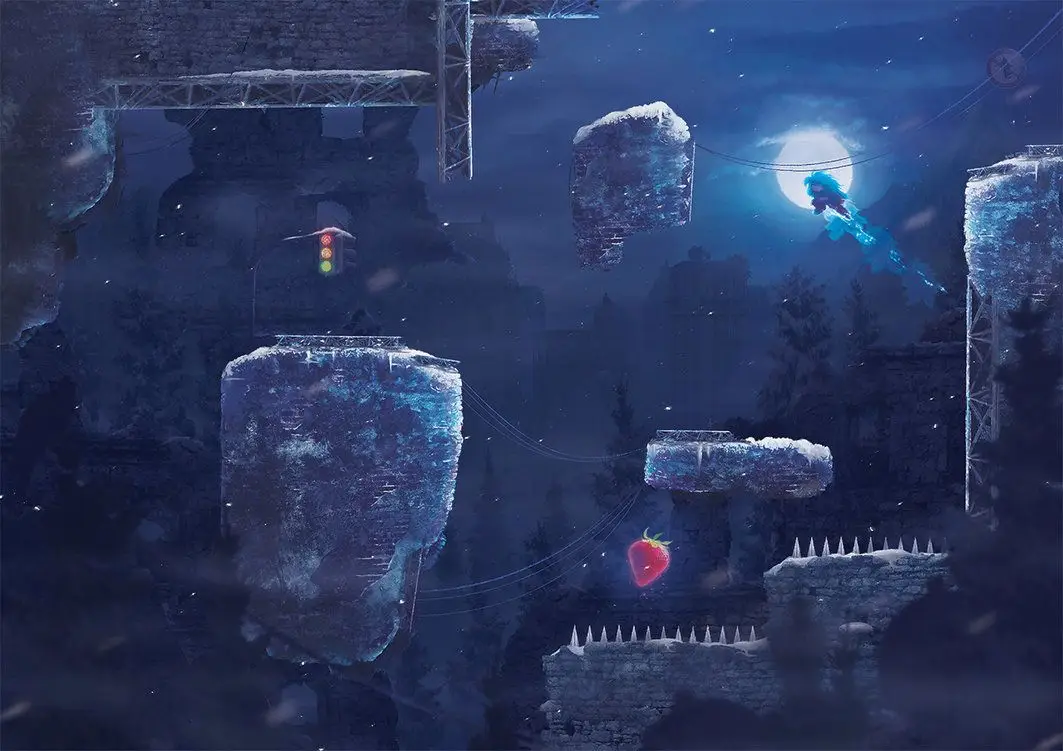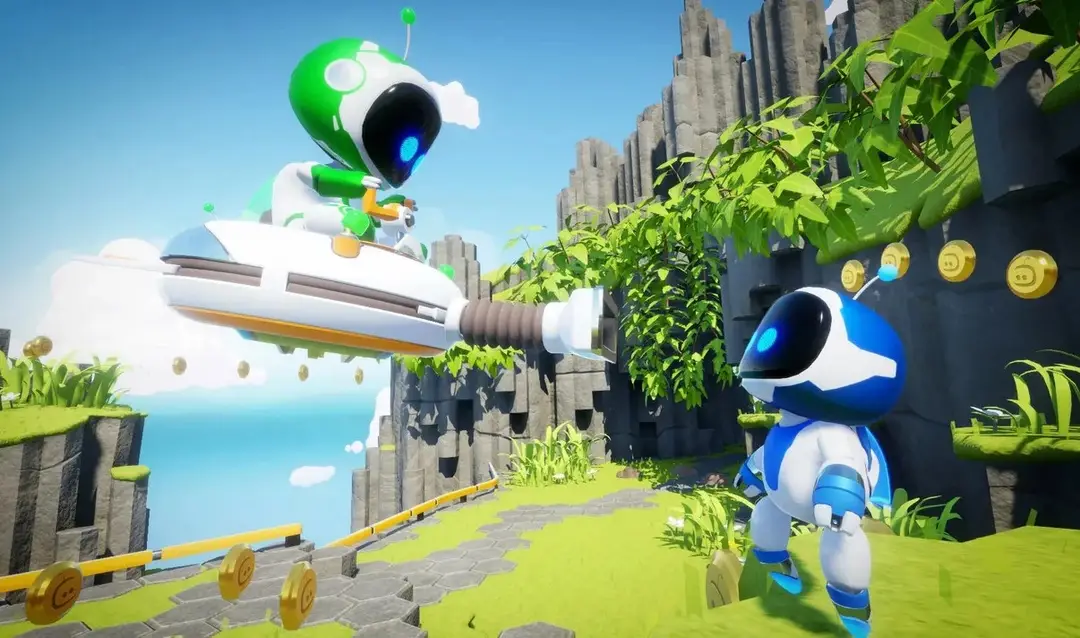The classic game about Mario not only brought 3D to the masses — it shattered old gaming laws and rewrote the genre’s rules from scratch. In 1996, at the launch of the Nintendo 64, no one offered such a level of freedom. The main character no longer moved on a flat plane. He ran, jumped, slid, swam, and even rode on shells — in full three-dimensional space. Instantly, a new standard for platformers emerged, which competitors have aspired to ever since.
At launch, sales of Super Mario 64 exceeded 11 million copies — that’s 45% of all Nintendo 64 units sold. A true cultural phenomenon, not just a launch title for the console.

How Super Mario 64 Feels
The game uses ultra-precise movement physics. Mario performs up to 13 tricks — triple jumps, backflips, long jumps, and climbing on ledges. All actions are controlled without delays. The control of Super Mario 64 provides impeccable character control, even in complex acrobatic sections.
The response to input is instantaneous. Speed, jump angle, inertia — all are taken into account. Because of this, each mission requires not just memorization but refined execution. The controls do not forgive mistakes but reward mastery.
A Camera That Thought Ahead
The developers replaced static camera angles with a virtual “operator” — Lakitu. This idea allowed players to control the camera and adjust the angle to suit the task. Of course, the camera in Super Mario 64 sometimes struggled in confined spaces, but for 1996, this was a true breakthrough.
Lakitu anticipated the future. Modern 3D games still rely on the same technique — the camera follows the hero and is partially controlled by the player. A concept from the 90s, relevant in 2025.
How Super Mario 64 Became a Game Design Textbook
Each level is a standalone sandbox with its own rules. The developers did not copy scenarios but came up with a unique gameplay hook for each mission. Super Mario 64 creates a sense of exploration: around every corner — a mystery, behind every star — a new challenge.
The game offers over 120 stars, but completing it does not require collecting them all. This gives freedom of choice — the player decides how to conquer Peach. An approach that anticipated the “open-ended” design philosophy, which decades later made its way into Breath of the Wild.
The DNA of an Era: Super Mario 64 as a Symbol of the 90s
In the 90s, it seemed that anything was possible. The internet was just emerging, VHS was giving way to DVD, and games were transitioning from 2D to a three-dimensional world. It embodied the spirit of that era. Its recognizable title screen with Mario’s stretching face is an icon that needs no captions.
Today, this digital project evokes powerful nostalgia. It was the first 3D experience for an entire generation. Games of the 90s rarely demonstrated such technological maturity — and almost none have survived to this day as a benchmark.
The Music and Visuals of Super Mario 64
Composer Koji Kondo created a soundscape where every note resonates with what’s happening on screen. The melody of Dire Dire Docks still appears in Lo-Fi playlists. The music enhances the atmosphere and is instantly memorable. It’s not just background — it’s an active element of the gaming experience.
The graphics for 1996 seemed photorealistic. Yes, the blocky models reveal their age, but the bright palette, object readability, and clear visual language made the game timeless. The gaming project does not chase pixels — it creates a recognizable world that invites exploration.
Immortal Code: The Technological Legacy of Super Mario 64
The game laid the foundation for the architecture of subsequent platformers. The engine base was even used in amateur developments. Elements of the code project spread worldwide in modifications, fan games, and emulators.
Moreover, Nintendo officially recognized the significance of the title by including it in the Super Mario 3D All-Stars collection on Switch. This confirms the game’s relevance even after 28 years.
Criticism and an Objective Look at Super Mario 64
The game demonstrates innovation but does not avoid rough edges. In narrow corridors, the camera sometimes behaves incorrectly. Some levels are overloaded with “precision jumps,” which can cause discomfort for inexperienced players. The lack of a mini-map and hints complicates orientation. These flaws do not detract from the overall perception but highlight the product’s age.
Super Mario 64: Is It Worth Playing?
In 2025, the game retains educational value for aspiring developers and inspires players with its pure gameplay. It teaches thinking through mechanics rather than dialogue. It encourages movement rather than observation. It offers freedom but demands precision.
Even decades later, the project remains the pinnacle of the 3D platformer genre, not just an item on a retrospective list.
What Makes Super Mario 64 Powerful
The project was a revolution and showed what a 3D game could be. It combined freedom of movement, physics of motion, and intuitive controls for the first time. It set standards that modern platformers still use today. Its strength lies in the details that still feel alive and thoughtful even decades later. The combination of each element works to create an impression:

- Innovative Gameplay – the first successful experience of full 3D control with a focus on mechanics.
- Precise Physics – the implementation of Mario’s movements remains a benchmark to this day.
- Flexible Design – each level is unique, the structure is non-linear.
- Massive Influence – standards for camera, control, and missions have migrated into dozens of games.
- Music and Visuals – the soundtrack and bright style create a cohesive atmosphere.
- Reputation and Recognition – the game appears in most global top lists and collections.
- Genuine Nostalgia – a generation of players grew up on it.
- Accessibility – it can be played on the original console, emulator, or in the Switch collection.
Super Mario 64 is not just a cult game, but the foundation of an entire genre. Players still choose it in 2025 — classics do not age when backed by brilliant design.
Conclusion
Super Mario 64 has not lost its relevance. It continues to serve as a benchmark for developers, game design researchers, and players. Technologies have advanced far, but the essence remains: precise control, a fair challenge, and genuine joy from every successful jump.
 en
en  de
de  ar
ar  es
es  nl
nl  hi
hi  fr
fr  it
it  pt
pt  el
el 












